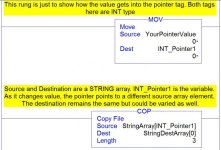Wheres the beef or Pointers
- Thread starter asterof
- Start date
Similar Topics
Its starting to dawn on me in aint about the hardware anymore.
Is PLC programming a last bastion of sorts for programmers? I say that because...
All
trying to detect ground beef in an auger/incline screw. have tried ultrasonic sensors but it seems i cannot get a stable signal, possibly due...
Hello,
I've just came out of a call where a program that was modified two weeks ago threw the processor into fault.
The program has been done...
I'm trying to get a 5069-L306er to talk to a Automation Direct ProSence Controller by using RA's AOI for modbus client but its stuck not getting a...
The last time I did anything with Wonderware was just after the dot com bust. Boy, I feel old. Anyway, it looks like I will get the chance to...







